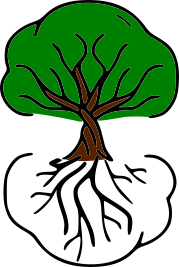On a lazy Sunday afternoon, I lay in a hammock as the clouds drift by over the island. As I finish my book, I look up at the two amazing trees supporting me. Not only are they holding my weight above the ground, but are also giving me fresh oxygen to breathe. They reduce the erosion of the island where I work. Even deeper, they challenge my mind and my being to think in new and creative ways. They stand as testaments to time and wisdom.
It should come to no surprise that the book I just finished was Urban Forestry by Jill Jonnes. In those 300 some pages Jill takes us through the American story. Trees, she argues, are not some ornament in our cities but are crucial. The countless stories told from the founding fathers to present day show how trees are interwoven and partners in our urban spaces.
Living in the mountains of Washington for the past year and a half made me think of cities as 'concrete jungles.' While I knew intellectually that there are habitats in urban settings, it wasn't until coming to Boston that I found how amazing these urban spaces can be.
Over looking the Arnold Arboretum
While reading one of the earlier chapters Jonnes talked about the founding of a "tree museum" in Boston. I'll leave that story telling to her, but I thought to myself, "I now live near Boston. I wonder if that place is still running." Literally seconds later I was absorbed into planning a trip to the Arnold Arboretum.
Upon getting there a week later I was amazed at the diversity and beauty found in the place. There were trees from not only the US, but around the globe. Together they make this strange new biome that never would happen usually. I only got to spend an hour there that day, but I look forward to getting lost in that urban forest.
I think urban spaces can be both scary and fascinating spaces. If designed poorly we can create situations where people are disadvantaged systematically. If designed well we can have people from countless cultures living side by side. In this way, Jonnes argues that not only should we include human diversity, but our urban forest also needs to include diversity to strengthen them. We don't need another dutch elm disease or emerald ash borer coming through our spaces.
Even if you are not into trees or cities, this book is a must read for any American. Hopefully by the end of it you will be convinced, as I am now, how important our forests are to the cityscapes of America.


